Please note: Use Hearing Protection ended on 3 January 2022. To find out what exhibitions and activities are open today, visit our What’s On section.
Use Hearing Protection: The early years of Factory Records tells the story of the four-year period at the very beginning of Manchester’s iconic independent record label. Factory’s history has been described by Dave Haslam as ‘lad heavy’. One of the amplified stories we tell in the exhibition looks at five key women involved in the Factory story at the start. The story questions whether Factory Records was inclusive of women deliberately or coincidentally.
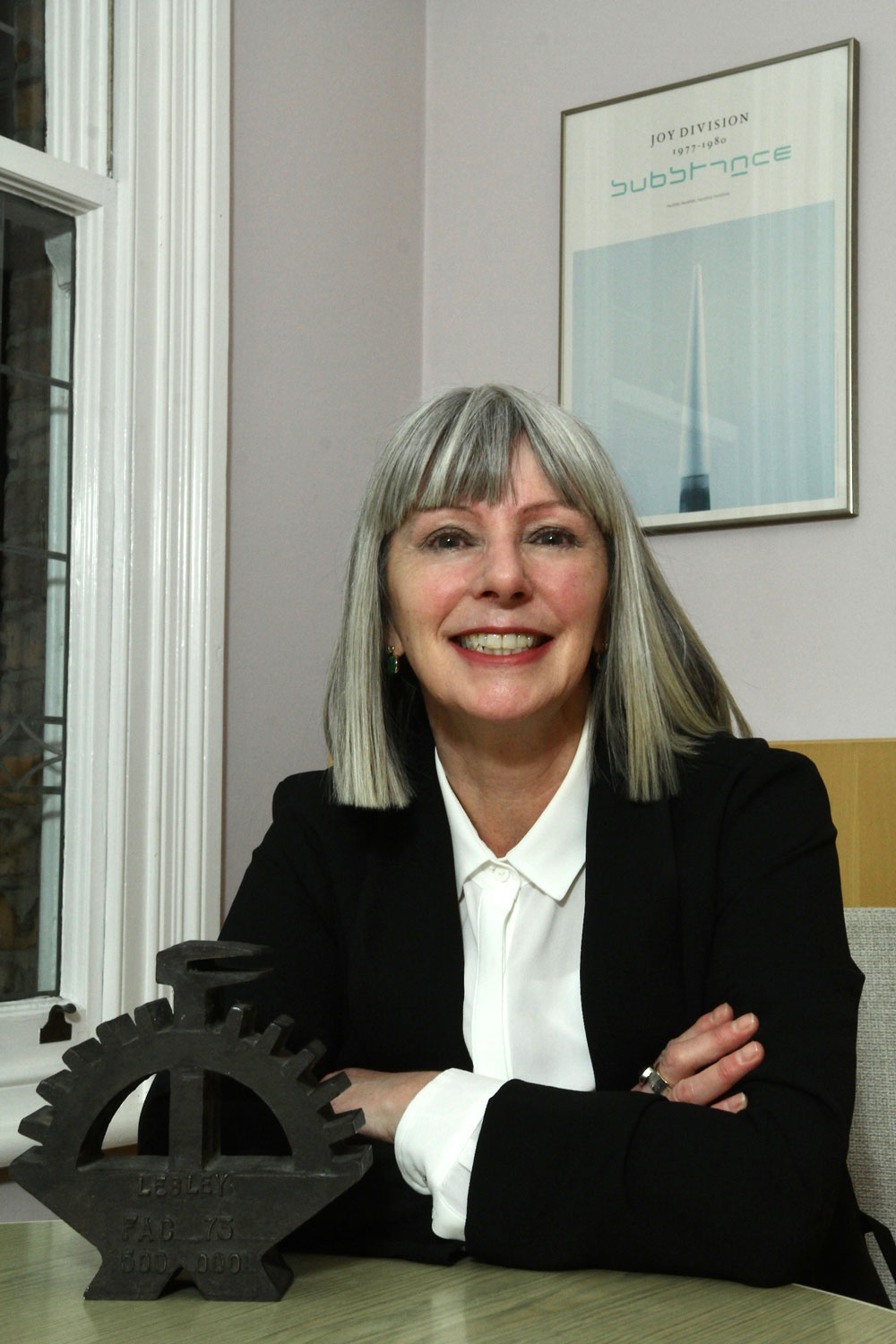
Back in June 2016, A Certain Ratio tweeted about three strong women who had worked behind the scenes to make sure Factory ran smoothly. One of those women was Lesley Gilbert. Lesley was the Production and Office Manager at Factory from 1980–85, seeing all sides of the label as it developed.
“The early years were vitally important in setting the scene for everything that followed with Factory, the way that the label and the bands were talked about, how it and they talked about themselves, the ethos and the look of what was produced … nobody at the start would have, in their wildest dreams, believed that we’d still be here talking about it today…”
Lesley joined the Factory family a couple of years after everything got started. Lindsay Reade was there right at the beginning. Lindsay introduced her then husband Tony Wilson to a number of people on Manchester’s music scene, in particular Tosh Ryan, who headed up independent punk record label Rabid Records.
“Tony and I often went to Rabid’s headquarters on Cotton Lane whereupon brains were picked. How to get sleeves made, pressings done, metal stampers made etc. Rabid got a lot of advice from Geoff Travis (who founded Rough Trade), and Tony and I often went to London to pick his brains as well.”
Lindsay also brought Orchestral Manoeuvres in the Dark to Factory, encouraging Tony to release their debut single Electricity. She didn’t work for Factory until later in the label’s history, when she set up Factory’s overseas licensing department.
Someone who never worked for Factory, but who was an influence on the early cut-and-paste photomontage style of the flyers and newsletters publicising Factory’s existence, was the artist Linder. Linder had a loose connection to Factory Records through Peter Saville, who was a fellow art student at Manchester Polytechnic. Linder produced flyers for early Factory gigs at the Russell Club in Hulme, before designing a menstrual egg timer catalogued as FAC 8 in the official Factory catalogue and having her band Ludus featured in a short film for FAC 9 The Factory Flick.
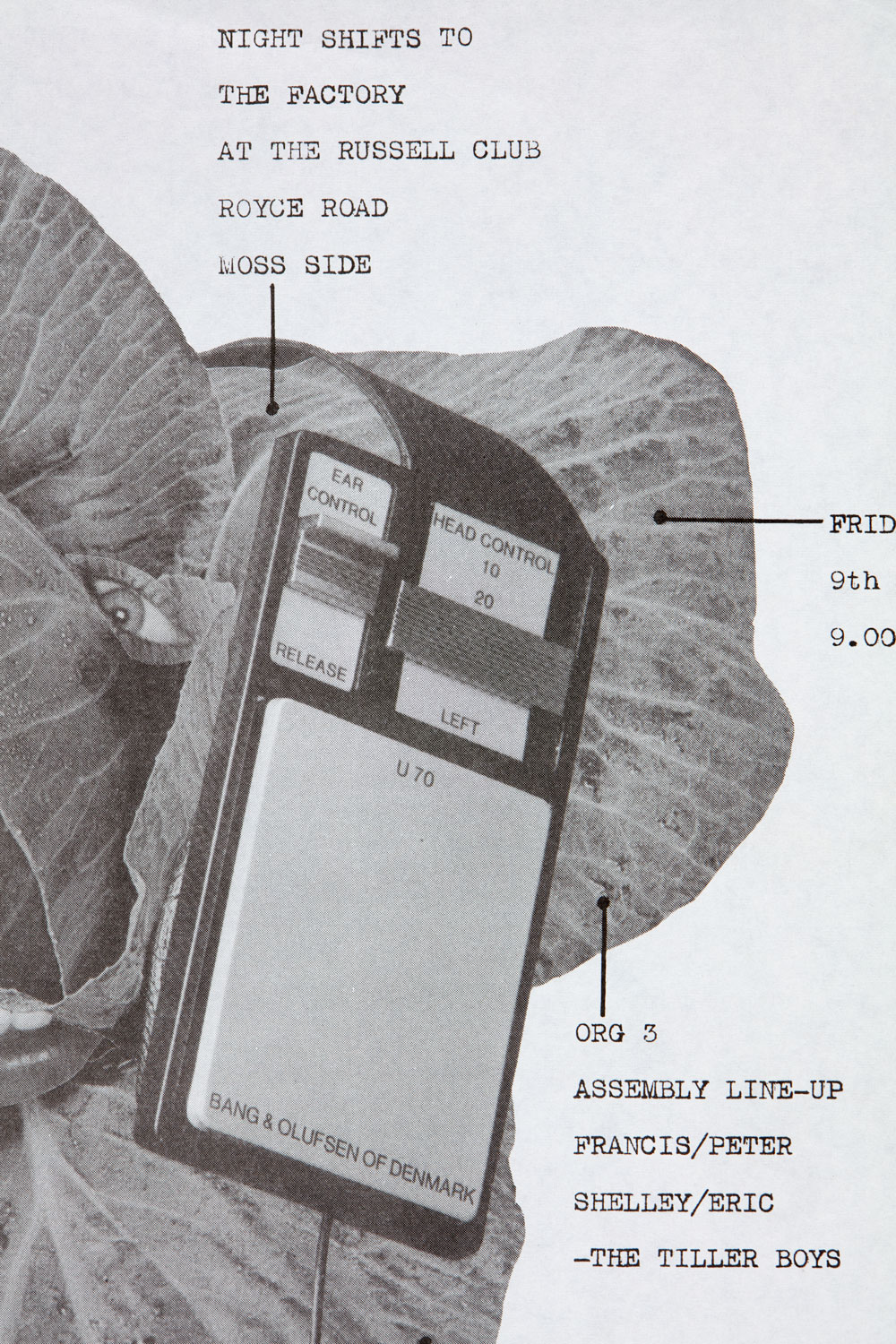
Linder’s radical feminist photomontages fitted with Tony Wilson’s view of Factory Records as a tool for presenting Manchester differently to the world. His vision for the label was influenced by the Situationist International movement, which had also informed the Manchester punk scene that Linder was involved with through her design work for Buzzcocks.
The Situationists believed that cities could be remapped, based on the way they make people feel and behave. Writer Liz Naylor was involved in a Factory project that echoed this Situationist theory. Liz wasn’t formally part of the Factory family, but contributed twice to the first 50 artefacts in the Factory catalogue. Liz co-edited Manchester music zine City Fun. She wrote an article for the zine, titled ‘No City Fun’, that explored her relationship with the city and how it made her feel and behave. This became a film under the same title, scripted by Liz and directed by Charles Salem, and shown at FAC 9 The Factory Flick event. Liz went on to create a four-page film script for FAC 20 Too Young to Know, Too Wild to Care, a film about A Certain Ratio that was never made.
The exhibition also features Ann Quigley, an artist and singer with connections to A Certain Ratio. Ann’s paintings appear as the sleeve art for A Certain Ratio’s second single on Factory, Flight (FAC 22), and the band’s first studio album, To Each… (FACT 35). Ann was the singer for another band on Factory Records, Swamp Children, who formed in 1980. Swamp Children included Martin Moscrop from A Certain Ratio in its line-up, and two of the tracks on their debut EP for Factory, Little Voices (FAC 49) were produced by A Certain Ratio’s singer, Simon Topping. It was Ann’s friendship with Simon that led to her producing the paintings used on the A Certain Ratio records.
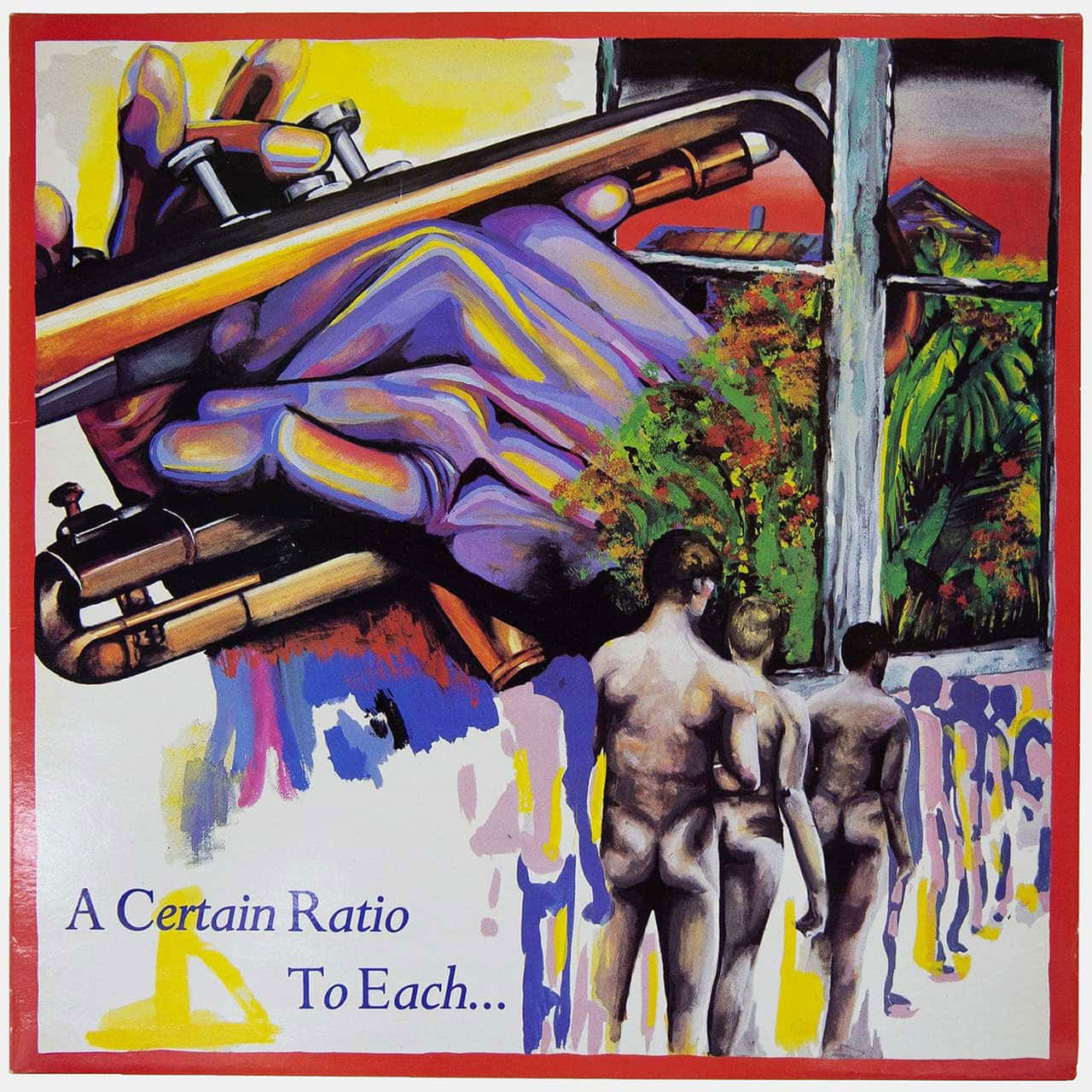
Courtesy Warner Music UK
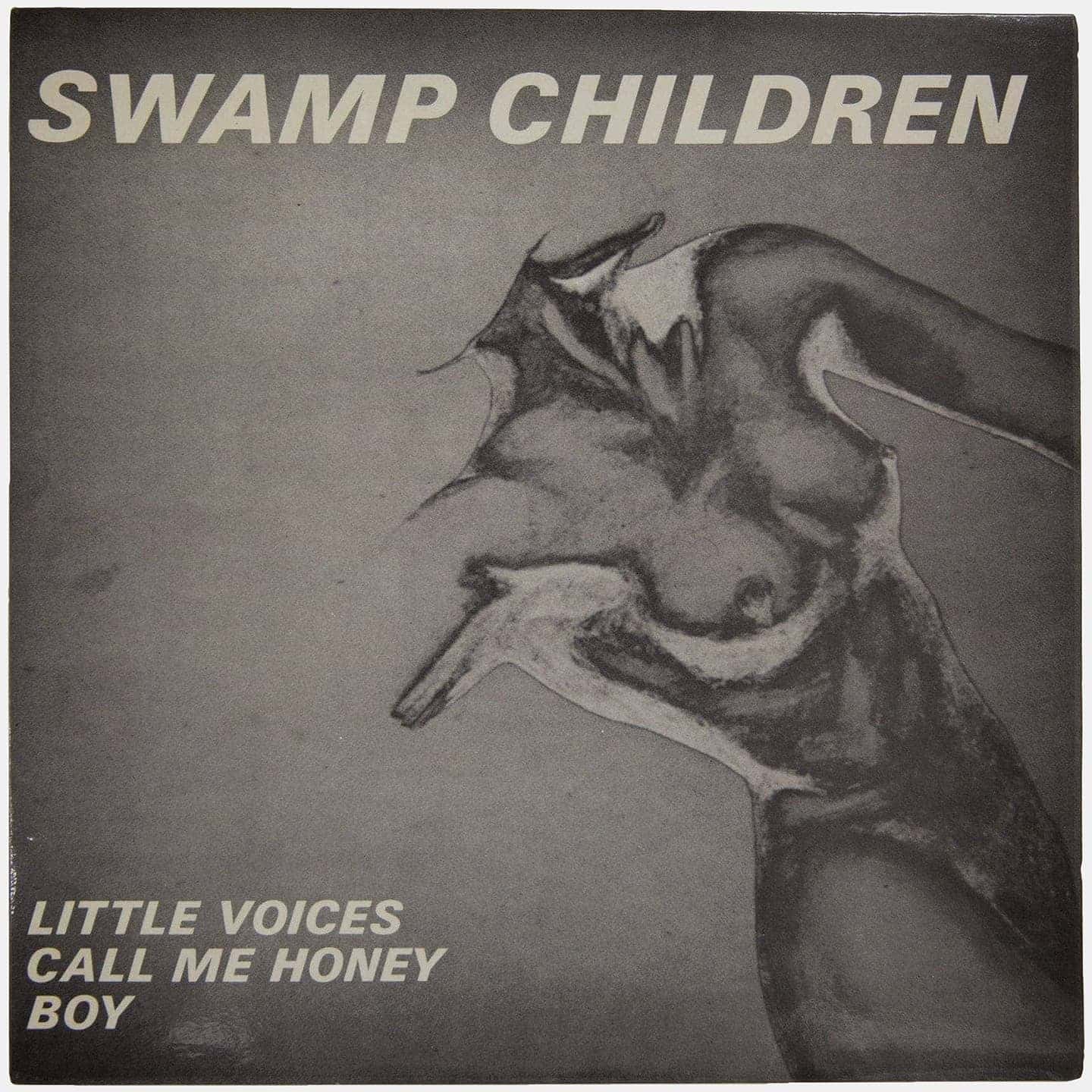
Courtesy Warner Music UK
Inspired by the punk fanzine Shy Talk, produced by Steve Shy, whom Ann knew from Manchester nightclub The Ranch, Ann started her own fanzine in 1979. Called The Swamp Children, it shared its name with her band. It featured writing, poems and art by Ann and her group of friends. Ann had been at art school in Liverpool and, on her return to Manchester in 1979, joined an art class at Stockport College where she met Gillian Gilbert. Gillian was one of the contributors to The Swamp Children, along with Ann’s bandmates John Kirkham and Cliff Saffer, former Tiller Boy Eric Random, and A Certain Ratio members Jez Kerr and Pete Terrell.
“John’s uncle had a printer at his factory, so in a very organic way the fanzine grew, no theme, it was just a collection of random images, doodles, poetry… it didn’t have any message—political, post-punk, or otherwise—it was just a collection of bits and bobs. John’s uncle’s printer was prehistoric, you could only use this horrible shiny, slippy paper… totally impractical… We sold it at a few gigs at Manchester Poly, the university, student gigs, for 50p. If it had been done on decent paper, we would have printed more!”
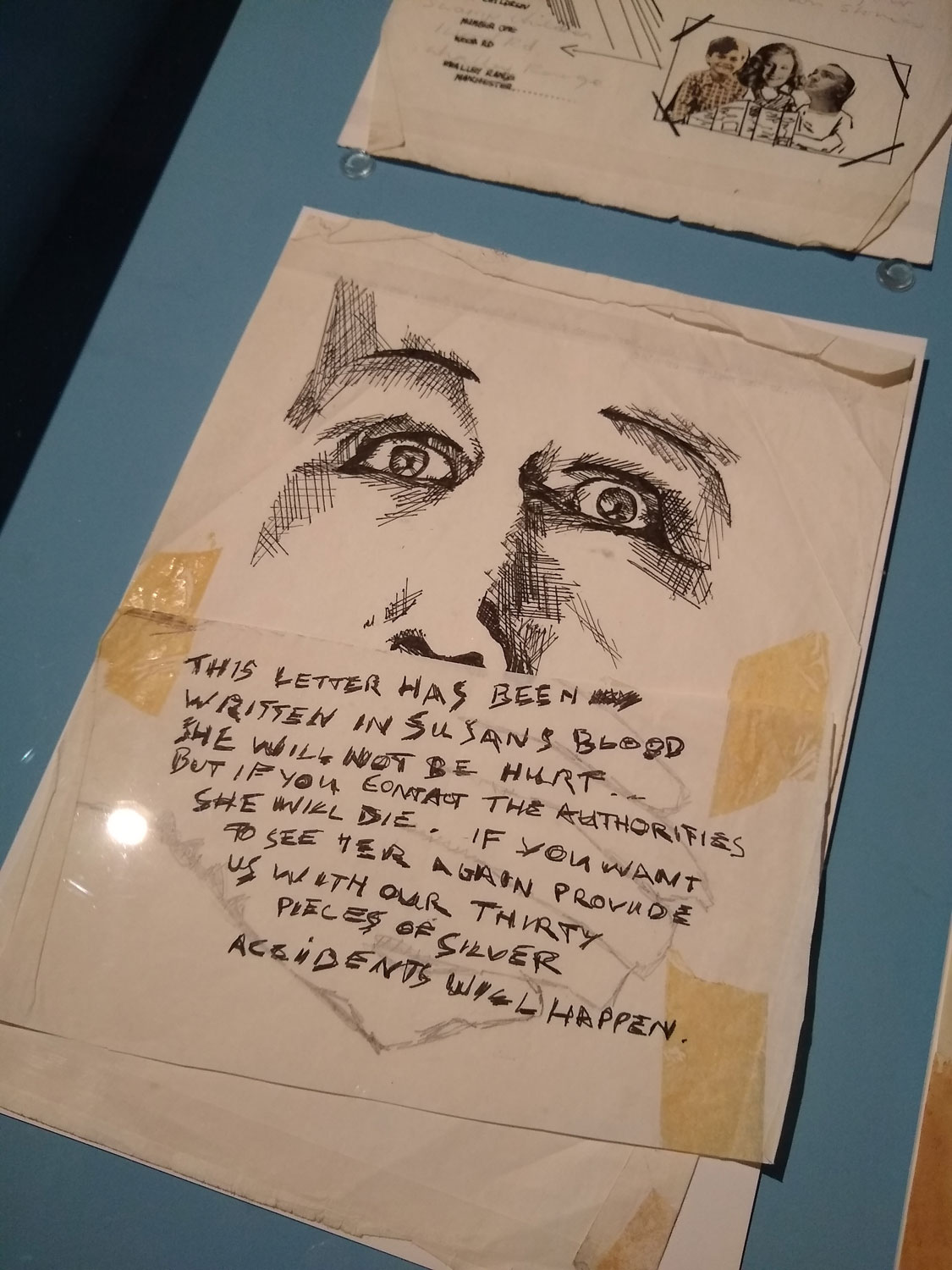
Gillian Gilbert is, of course, part of Factory Records’ most successful band, New Order. Gillian’s live career had begun a little bit earlier, when she stood in to play guitar with Joy Division at Eric’s in Liverpool, due to Ian Curtis injuring his hand. Gillian officially joined New Order in late 1980, and the exhibition features the draft letter the band’s manager Rob Gretton wrote to the Musicians’ Union at the time.
And what about the two other women mentioned in that tweet from A Certain Ratio in 2016? When Factory started, Tina Simmons worked for independent record label and distributor Pinnacle. Tina was Pinnacle’s Label and Production Manager and started to work as Factory’s distribution rep in 1979. She later joined Factory to run its international licensing, following in Lindsay Reade’s footsteps.
Tracey Donnelly’s connection with Factory came later. She joined Factory as the receptionist at Swing, the hairdressing salon in the basement of FAC 51 The Haçienda, in 1983. When Lesley Gilbert left Factory in 1985, Tracey became the PR Manager for Factory Records. Interviewed by Dr Audrey Golden for Louder Than War, Tracey said this about whether women working in the music industry in the 1980s experienced sexism: “Oddly, I never even thought about it at Factory. You felt like an equal. I suppose it must seem odd now, looking back, but there was no sense of that. There were so many women around the Factory scene.”
It was Tracey who came up with the idea to curate an exhibition about Factory’s 40th anniversary, back in early 2019. That idea crystalised into Use Hearing Protection: FAC 1 – 50 / 40, hosted at Chelsea Space in London. Without that exhibition, the current exhibition at the Science and Industry Museum wouldn’t have existed. It seems like women have always been the ones keeping Factory running smoothly.
7 comments on “Celebrating the women of Factory Records”
Comments are closed.
Great article! They were great times in Manchester’s history..
Thanks, Yvonne. I’m glad you enjoyed the article.
This is what I liked about Factory. They were diverse in the bands that were on the label and they took people on based on nothing more than they liked them!
I’m tying in my trip to see New Order with this exhibition.
Thanks for the article.
Andrew
Thanks, Andrew. I hope you enjoy the exhibition – there are lots more stories in there about how ground-breaking Factory was, hopefully there will be something surprising for you to discover.
Tina?
Hello Phil, could you expand on your question about Tina, please? The main focus of the blog is women involved in Factory during the period of the Use Hearing Protection exhibition, but Tina Simmons and Tracey Donnelly are also included from the following period of the label.
Hi Jan,
re. JOY DIVISION.
I have a 24 track master by Martin Rushent in 1979,
wood like to talk to you about it.
yours Nigel.